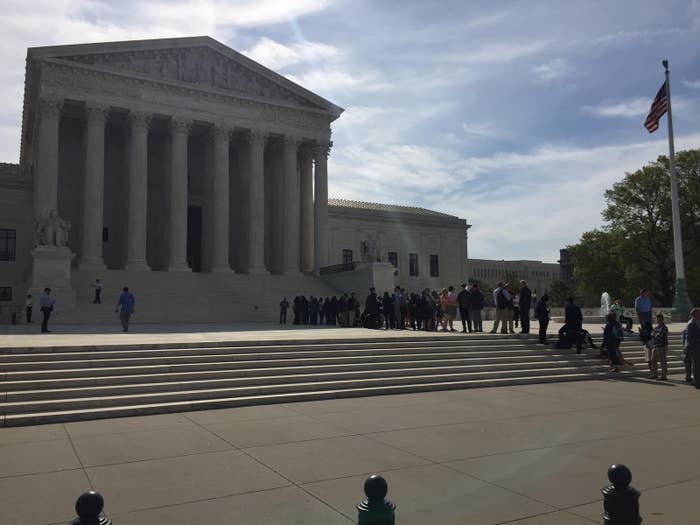
WASHINGTON — The Supreme Court on Wednesday upheld redistricting maps devised by Arizona's independent redistricting commission, holding that challengers had not shown that partisanship likely was the predominant reason for the commission's map-making decisions.
After the 2010 census, Arizona redrew its state legislative districts — the new districts have populations that differ from each other by less than 10%. When maps meet that condition, the unanimous court held, challenges "must show that it is more probable than not" that the population differential "reflects the predominance" of illegitimate factors like partisan interests over legitimate factors.
Legitimate factors for redrawing districts include, as the court noted, geographic compactness, following local boundaries, and — as Arizona claimed here — seeking to follow the Voting Rights Act.
The decision will make it very difficult — though not impossible — for those challenging redistricting maps when the population disparity between districts is less than 10%.
The court's decision marked a middle ground between the extreme positions taken by the lawyers in the oral arguments over the case this past fall. At that time, the challengers argued that even a 1% distinction in population levels, if based on impermissible factors, should be held to be unconstitutional. On the other side, the Arizona commission argued that a plan with 9.9% disparity based solely on partisan concerns "might well [be] constitutional."
The court — as Justice Stephen Breyer suggested at arguments would be the case — adopted neither position.
"[H]ow do we write this? There are two areas that are difficult to write," Breyer said at the time, referencing the court's propensity to allow the implementation of plans with less than 10% disparity and the court's concern with addressing how much partisanship is too much.
On Wednesday, Breyer wrote the court's short, 11-page opinion, ultimately deciding that, within that 10% disparity range, a higher standard would need to be met for people or groups to successfully challenge redistricting maps.
"[T]hose attacking a state-approved plan must show that it is more probable than not that a deviation of less than 10% reflects the predominance of illegitimate reapportionment factors rather than the 'legitimate considerations' to which we have referred [in the court's cases]," Breyer wrote. "[W]e believe that attacks on deviations under 10% will succeed only rarely, in unusual cases."
